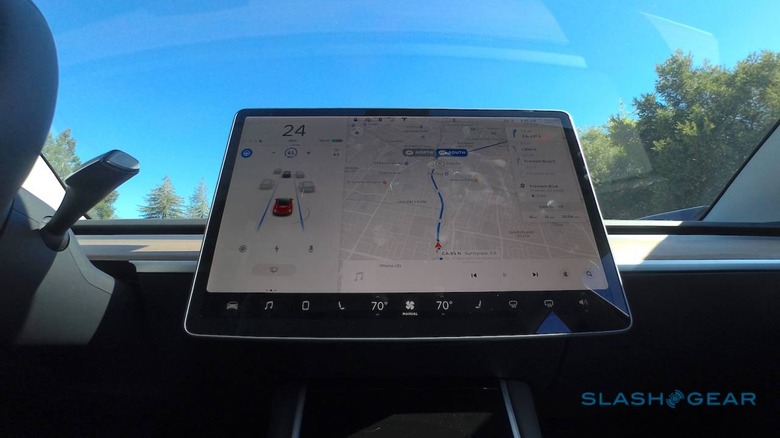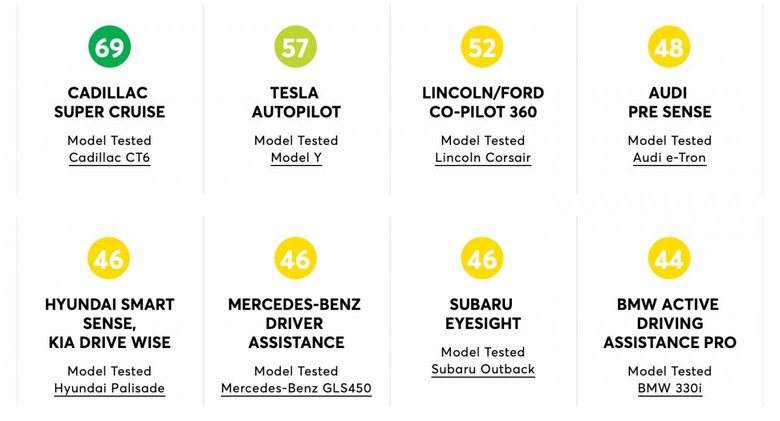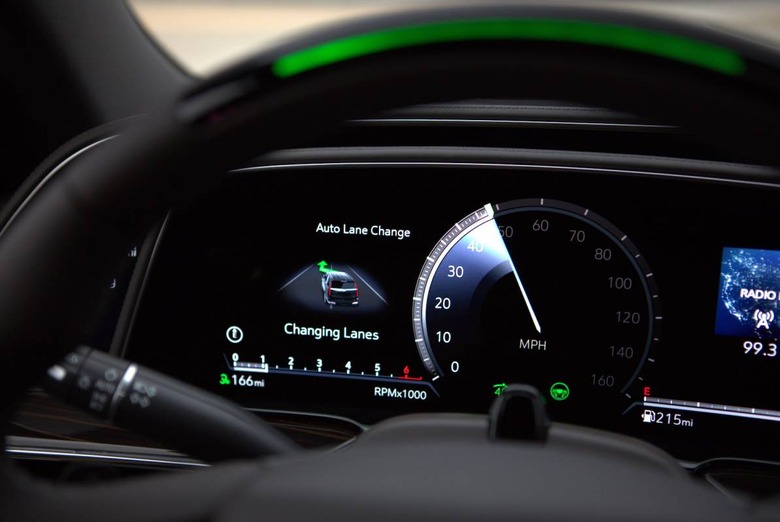Cadillac Super Cruise Vs Tesla Autopilot Test Asks The Big Attention Question
Cadillac's Super Cruise has once again beat out Tesla's Autopilot in independent tests of driver-assistance systems, with Consumer Reports weighing in again on the controversial topic. Seventeen different systems – combining adaptive cruise control and lane-keeping – from mainstream and luxury automakers were put through their paces, the results demonstrating that expectations about, and for, the tech still vary considerably.
Adaptive cruise control is increasingly common on most new vehicles, an upgrade from the traditional "set a speed" systems that have long been available. At its most basic, it uses radar to track the vehicle ahead in the lane, adjusting speed from the value set by the driver to maintain a preset – and usually adjustable – distance.
More recent has been the integration of lane-keeping assistance. That typically promises to keep the vehicle centered in the lane, working in tandem with adaptive cruise control. By the generally-accepted definitions of autonomous driving, such systems are Level 2 compliant. That is, they support the human driver, but that driver must supervise the system and is responsible for stepping in and taking over at any time.

Currently, there are no true self-driving vehicles on sale today. While Tesla has begun early, closed betas of its so-called "Full Self Driving" system on a handful of cars in the US, the Autopilot upgrade still insists that drivers monitor its performance and be ready to take over. A Level 4 or Level 5 autonomous vehicle requires, by definition, no human supervision.
Consumer Reports didn't test the FSD package, instead the current version of Autopilot on a Model Y electric crossover. That was compared with Cadillac's Super Cruise, along with Ford's Co-Pilot 360 on the Lincoln Corsair, Audi Pre Sense on the e-tron electric SUV, and systems from other automakers like Mercedes, BMW, Volvo, Porsche, Nissan, Lexus, and VW.
The result is fairly conclusive: Super Cruise scored 69 out of 100, putting it in first place and indeed holding that position from the company's tests back in 2018. Autopilot scored 57, Co-Pilot 360 scored 52, and Audi's system scored 48.

While multiple factors were considered, key to the ranking is how the vehicles measured driver engagement. There, Super Cruise's hands-free attention tracking – which relies on an IR camera behind the steering wheel, to make sure the driver is paying attention to the road – put it ahead, along with its clear communication through an embedded light bar in the upper wheel as to when the system was active, inactive, or about to hand over responsibility to the human operator.
The other systems, in contrast, rely on torque or contact on the steering wheel. That, Consumer Reports argues, is an incomplete measure of attention, since it doesn't actually gauge whether the human driver is looking at the road or at their phone, passengers, or sandwich.
What's particularly interesting is that Consumer Reports didn't actually test the latest, "Enhanced" Super Cruise, instead rating the existing system on the CT6 luxury sedan. That doesn't support automatic lane-changing, as Super Cruise will offer on the upcoming Cadillac Escalade, though that wasn't one of the features the testers actually considered.

However other tweaks to the system include easier activation – potentially addressing Consumer Reports' stated frustration in how quickly Super Cruise enables within the lane – and adjustments to lane positioning in response to other vehicles, as well as how the car adjusts its speed when traffic changes. The CT6 will not be upgraded to Enhanced Super Cruise as it requires new hardware, such as longer-range rear radar sensors, to enable the software features.
GM plans to roll out Super Cruise across 22 different models in its various brands by 2023, though it soon won't be alone in using eye-tracking. Ford's Active Drive Assist will use a similar system, and be available on the upcoming Mustang Mach-E electric crossover and 2021 F-150 pickup. Other automakers make some use of eye-tracking – BMW, for example – but only for a subset of driving-assistance, such as in low-speed traffic congestion.
The ranking is likely to prove controversial, as any assessment of these ADAS technologies tends to be. Super Cruise – and Ford's upcoming system – rely on pre-mapped highways, for example, whereas rival platforms can be used, theoretically at least, on any road. Fans of Autopilot, meanwhile, typically point to Tesla's rapid iterations pushed out via OTA updates to their cars, which have added support for automatic lane-changing and more over the years.
The reality, though, is that for the moment the driver is often as much of a weak link in the chain as the technology in the systems themselves. Consumer Reports marked down several of the cars for poor communication as to when the driver was in control – or about to be – and when the vehicle itself was playing a more significant role. That's before you get to misconceptions by drivers themselves about the actual capabilities of their vehicles versus what they believe they can do. With truly autonomous cars still some way out, it seems likely that the confusion around driver-assistance tech is only going to increase in the coming years.
